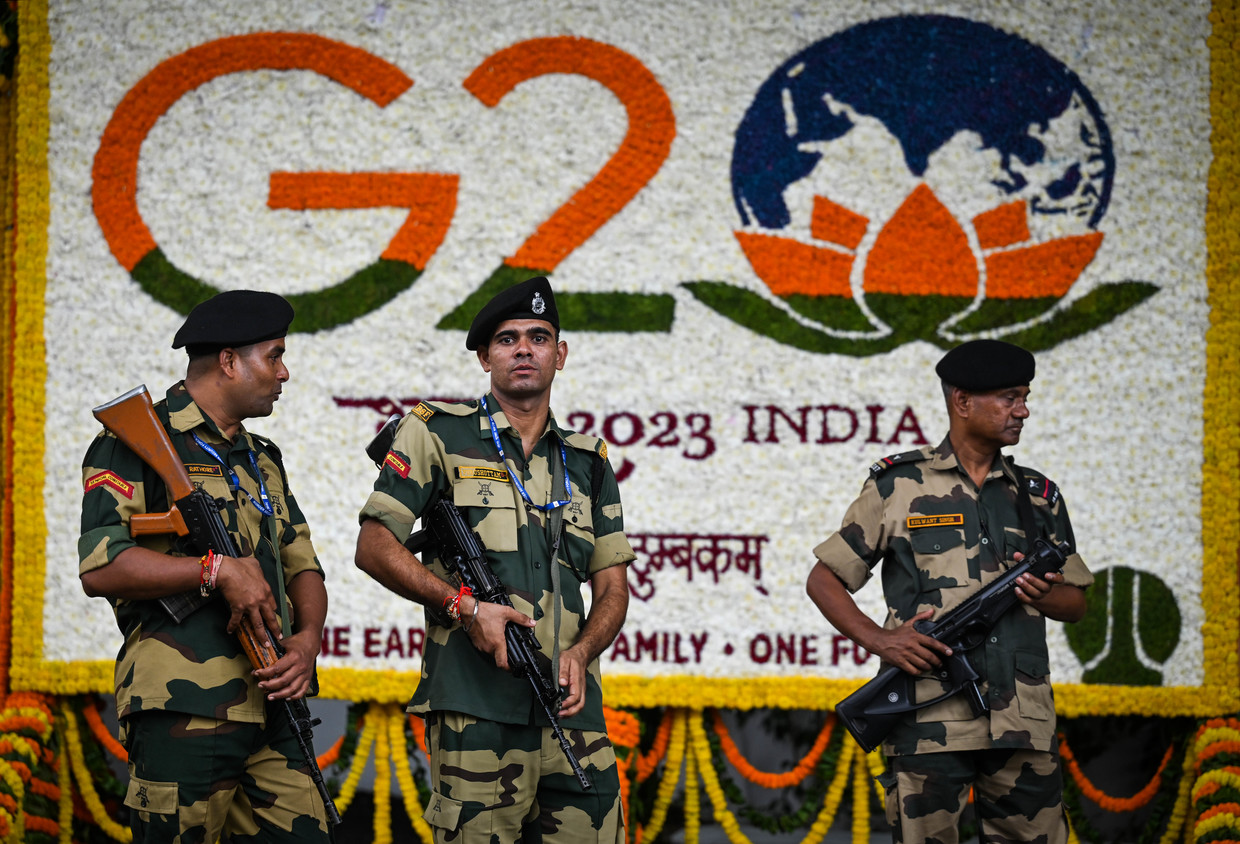As G20 wraps up, glowing images of New Delhi powerfully evoke India’s presidency

The G20 Summit weekend began giddily and ended euphorically, albeit a day early with the declaration – as far as the government of India was concerned.
With no substantive business left after the joint statement, the normally climatic third day turned out to be a literal washout, with overnight rains causing a bit of water-logging at the Pragati Maidan venue.
Pragati Maidan was built on 123 acres of land close to the shore of the Yamuna River about a half-century ago by the late Indira Gandhi for an International Trade Fair. It was given an exquisite face-lift by Prime Minister Narendra Modi, whose government reportedly spent over 41 billion rupees ($493 million) on the arrangements for the G20 Summit.
In those days, the halls were built in traditional style, cooled by thick walls, recessed windows, and high ceilings. In the 1980s, a couple could meet at the annual trade fair and pretend to examine machine tools from the erstwhile Soviet Union while surreptitiously exchanging glances. These days, there is air-conditioning.

Getting to Pragati Maidan in the heart of Delhi from the southern exurb of Gurgaon was eye-opening. The streets were deserted. So was the city metro. There were no street dogs on the 15-minute walk from the metro station to Jawaharlal Nehru Stadium, where the media was ferried to Pragati Maidan. Where had the people of Delhi gone?
“Our G20 has seen people’s participation,” summit sherpa Amitabh Kant told the media at the first press conference on Friday. “Every single Indian has been involved.”
The problem with inviting the international media to this lockdown of Delhi is that someone or other was bound to compare it to the G20 Summit at Hangzhou 2016 where Chinese Premier Xi Jinping played host to, among other guests, Prime Minister Modi. Xi famously did not attend the G20 this year, but no one seemed particularly bothered other than a few journalists.
At G20 2016, the security was not as tight, as a foreign media person told RT. In India’s capital, he was staying at a fancy hotel near Connaught Place, the bulls-eye of the Delhi map, and the morning he checked in, five policemen and an Alsatian burst into his room and checked his personal belongings.
“This never happened to me in China,” he said. Although he admitted when pressed that India’s security was getting more and more like China’s, which uses the umbrella excuse of “security reasons” to do whatever it likes, to citizens and non-citizens alike.
In comparison, another friend fondly recalled the G8 Summit he attended in 2006 in St. Petersburg, Russia. He sighed as he did.

The summit venue was exquisite, but more than the venue, the approach was exquisite. Billboards featuring Indian Prime Minister Narendra Modi greeted the delegates for miles leading to the venue: they were placed on lampposts, dividers, on the side of the road, on top of the road, on each bus stand – literally, everywhere.
Most of them carried the message: ‘Vasudhaiva Kutumbakam’, meaning “the world is one family.” And indeed, India’s theme for the summit was “One Earth, One Family, One Future.”
From all the PR, however, one got the impression that the underlying message was “One Summit, One Host.” The spouse of a Dubai-based diplomat said that most visitors were awe-struck.
In the end, it wasn’t the G20 that made the big news, but something that came out of meetings on the sidelines: the India-Middle East-Europe economic corridor, a sort of anti-Belt and Road initiative, the one China has championed. That didn’t matter.
The Delhi Declaration was adopted by the G20 leaders on the first day, and not on the last day, as was expected – if arriving at a consensus at all was expected. India was covered in glory and filled with euphoria that even an overnight flooding of exquisite Pragati Maidan complex, the images of which are now familiar to people across the globe, could not dampen.
The statements, views and opinions expressed in this column are solely those of the author and do not necessarily represent those of RT.














